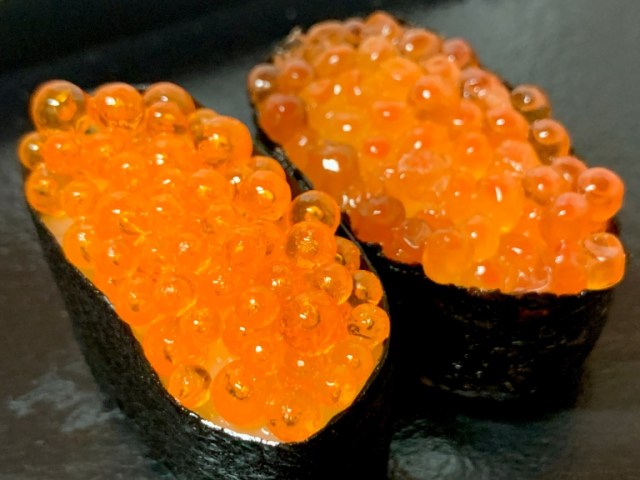
Plastic sushi reaches a new level of craziness with the new ikura gunkan model.
Part of what makes sushi so delicious is its simplicity. After all, a standard piece of sushi really only has two parts, a block of rice and a slice of fish.
So when Japanese plastic model maker Syuto released tuna and salmon sushi models kits earlier in the year, we thought they couldn’t take more than a few minutes to put together, what with the slice of fish being just two simple plastic pieces. Then we found out that each grain of rice is a separate piece.
Now, Syuto is back with an even crazier kit. This one is a gunkan-style (seaweed wrapped) piece of sushi, and this time not only is each grain of rice its own individual piece, but so is each and every piece of ikura, or salmon roe!
Syuto actually did the research to figure out how many grains of rice and salmon eggs there are in an average piece of ikura sushi, and came up with 364 pieces of rice and 64 eggs. Add in the singular strip of nori (seaweed), and all together there are 429 pieces in this single-piece-of-sushi model.
▼ The kit even comes in a package styled after the takeout boxes used by traditional sushi restaurants in Japan.
Step 1 (actually Step 1 through 364) is to remove the grains of rice from their frame, so we got to work plucking them out.
Removing them by hand is no problem, but you might end up with some bits of hanging plastic as you pull them away from the frame. If that happens, a quick snip with a pair of needle-nose pliers should remove the unwanted excess.
As we got further into the process, we found it mysteriously relaxing. It only requires low-level motor skills, so it’s not difficult or frustrating, but having so many pieces of rice to prep kept our minds focused enough that they didn’t have time to stray to thoughts of stress, anxiety, or any other mental unpleasantries that can build up in your daily life. It was like the rest of the world faded away, leaving just us and the rice.
Once the rice was done, the next thing to work with was the nori, which is one long, pliable PVC strip. If we were making our plastic sushi exactly like how we’d make a real one, we’d form a complete block of rice first, then wrap the seaweed around it. However, to make sure we got a nice oval shape, we instead decided to curve the plastic seaweed into a loop first, then fill it with rice.
After using some adhesive to close the loop, we began pouring in the rice, bit by bit. Between pours we used a brush to apply a top layer of adhesive, since the plastic rice grains won’t stick together on their own like real rice does.
It’s important to add the rice gradually, since you’ll need to occasionally smooth out the new pieces to keep the visual effect looking fluffy, not craggy.
Before long, though, we got into a steady rhythm, and again there was something soothing about having a manageable cycle to focus on.
It took about 90 minutes to assemble the 364 pieces of rice and their seaweed wrap. Next it was on to the ikura itself!
Like the rice, the salmon eggs can be popped out of their frame by hand. However, we’d recommend using pliers to remove them instead. This will cut down on the amount of extra plastic hanging off at the separation point, and since the ikura is bigger and rounder than the rice, and also going to be the very top section of the model, you want them to look as nice as possible.
▼ The 64 pieces of ikura are made up of12 large, 24 medium, and 28 small eggs.
Once you’ve got the eggs popped and smoothed, adding them is pretty much the same process as with the rice: apply a top layer of adhesive to the sushi piece, then add the ikura on top, and repeat.
Because there are fewer eggs than grains of rice, and because even the small eggs are bigger than the grains, arranging them only took about 10 minutes, and then we were done!
The finished kit is amazingly realistic looking. How realistic?
No, we didn’t make two sushi models. The above photo is of the plastic ikura model next to a piece of actual, edible ikura sushi, as are these.
So which one is the plastic sushi, and which one is the real one? We’ve circled the model in the photos below.
With simple steps and no need to apply paint or decals, Syuto’s Sushi Puramo ver. Ikura, as the ikura sushi kit is officially called, is easy enough for even complete newbies to put together. At the same time, the repeating nature of the assembly process means that this isn’t a kit about challenging yourself, but more about keeping your hands and mind just occupied enough so that you can relax. If that sounds like the model-building session you’re in the mood for, the kit can be purchased here through Amazon for 1,540 yen (US$13.50). We highly recommend picking up some real sushi too, though, because you absolutely will get hungry while working on the kit.
Photos ©SoraNews24
● Want to hear about SoraNews24’s latest articles as soon as they’re published? Follow us on Facebook and Twitter!
[ Read in Japanese ]

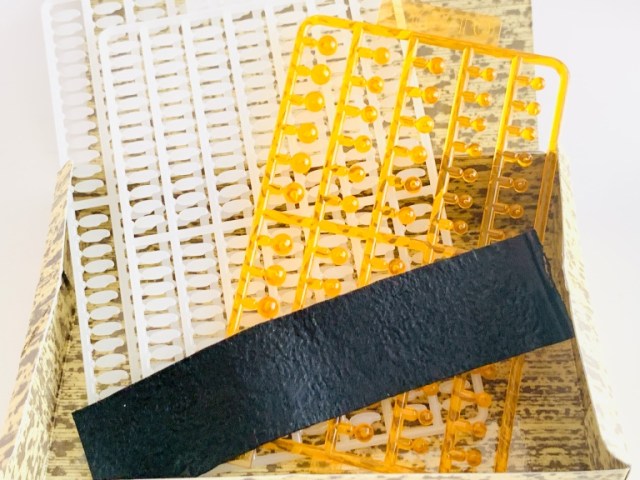
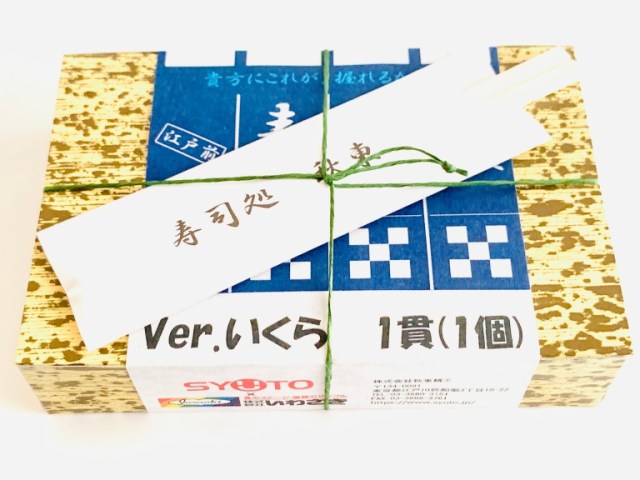
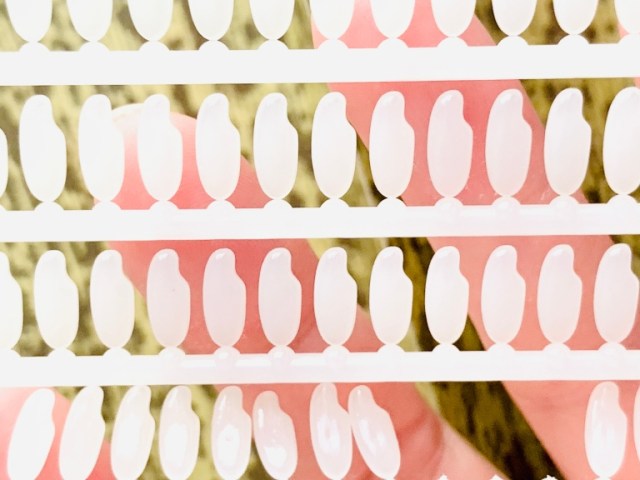
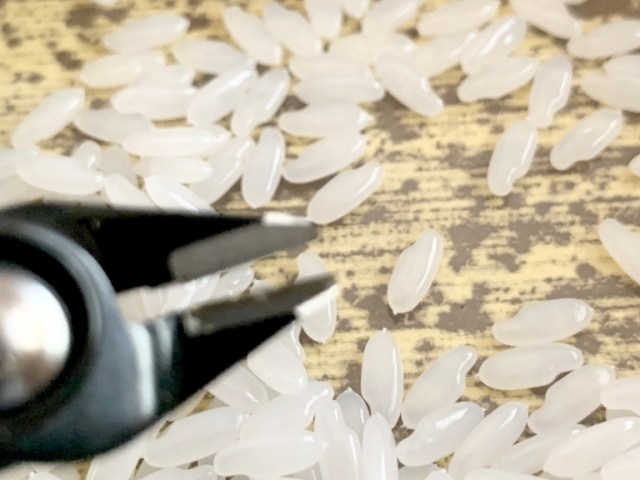

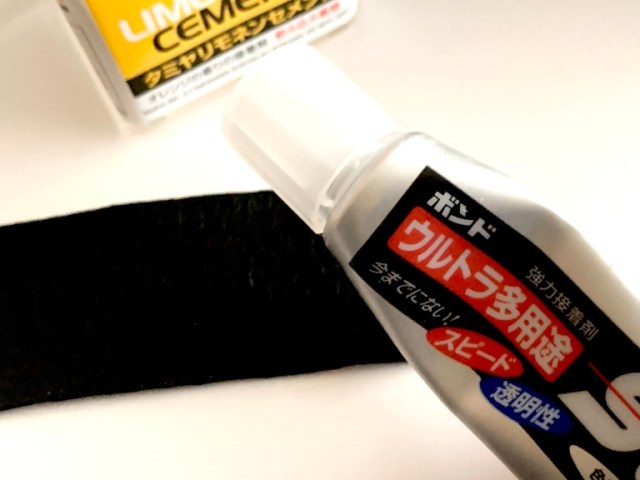
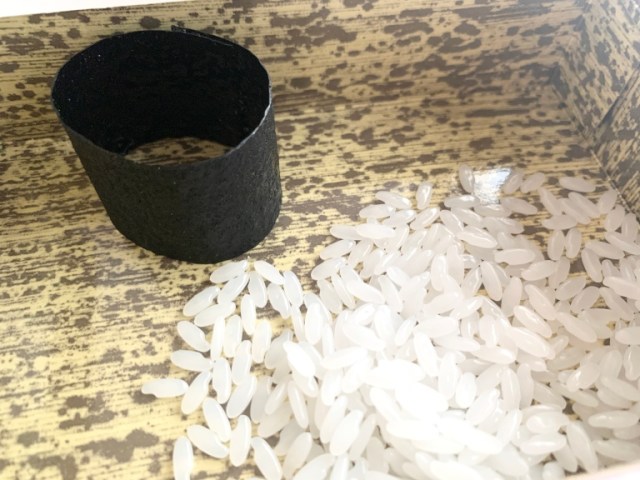

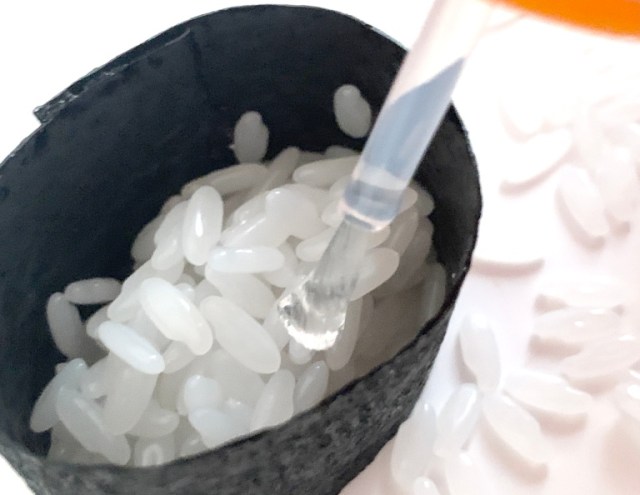
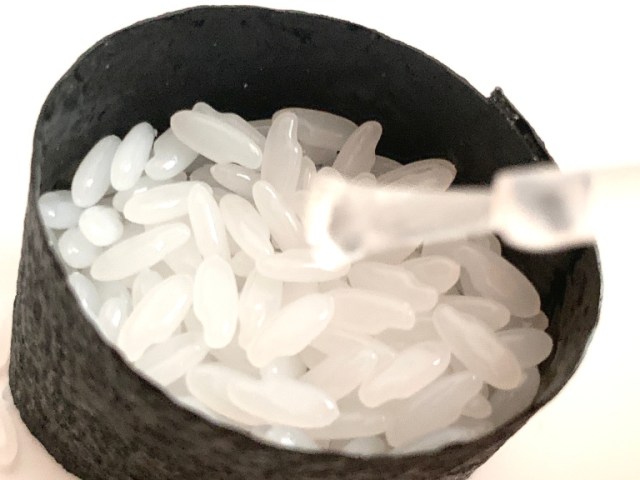
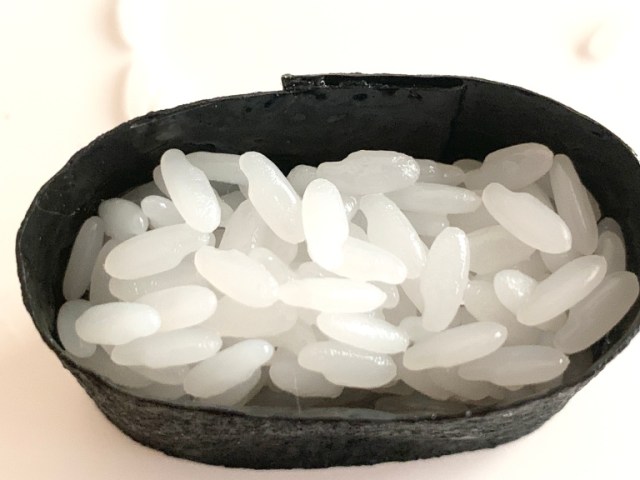
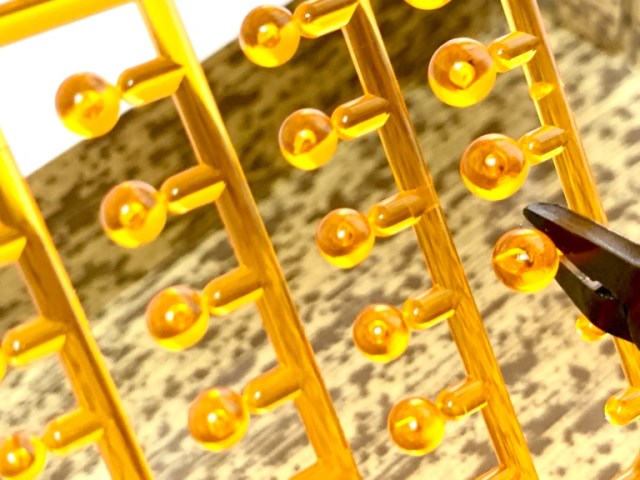
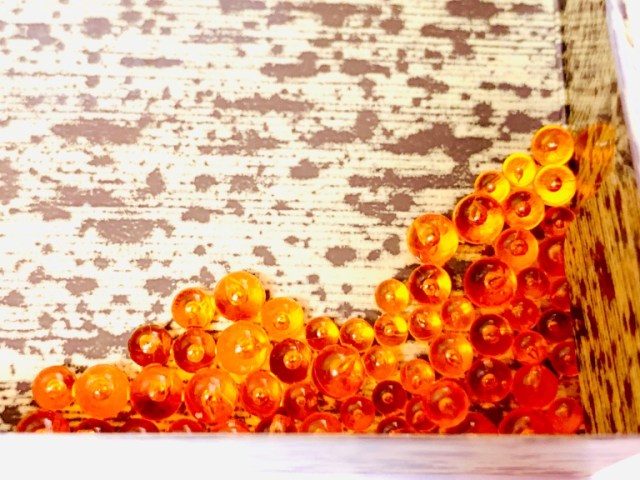
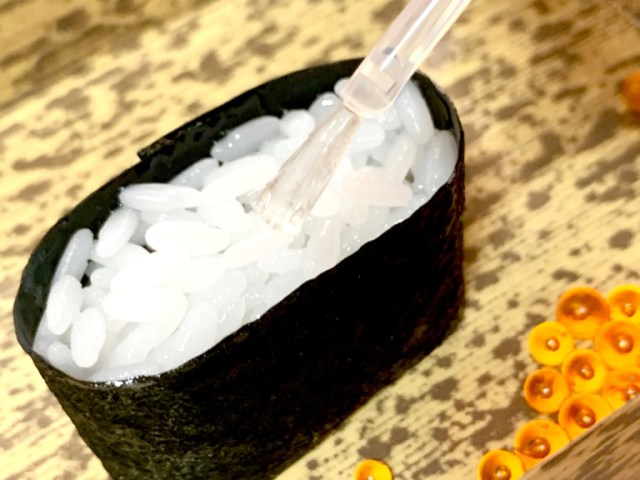
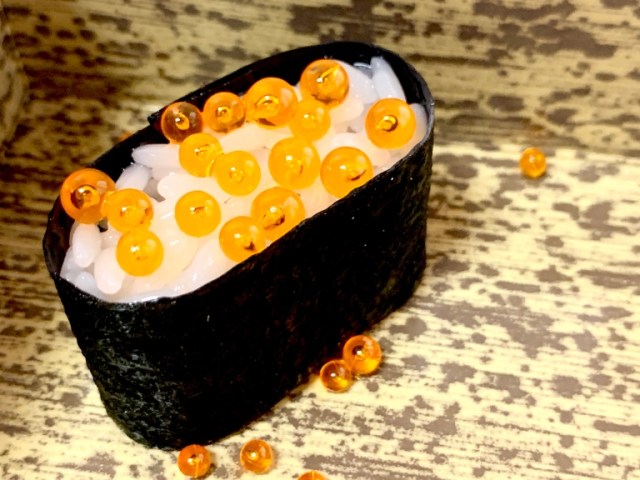
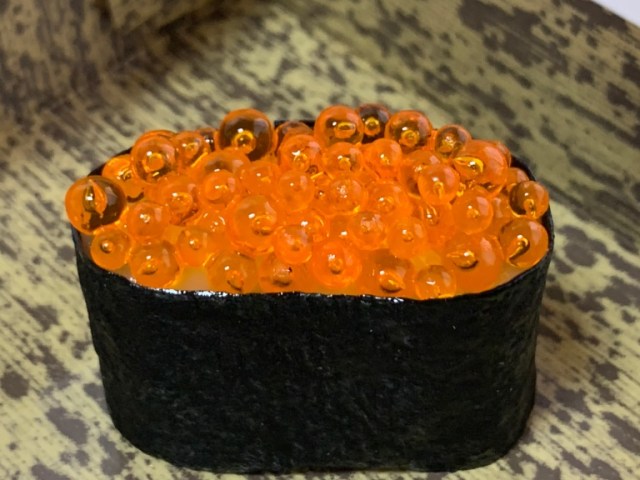

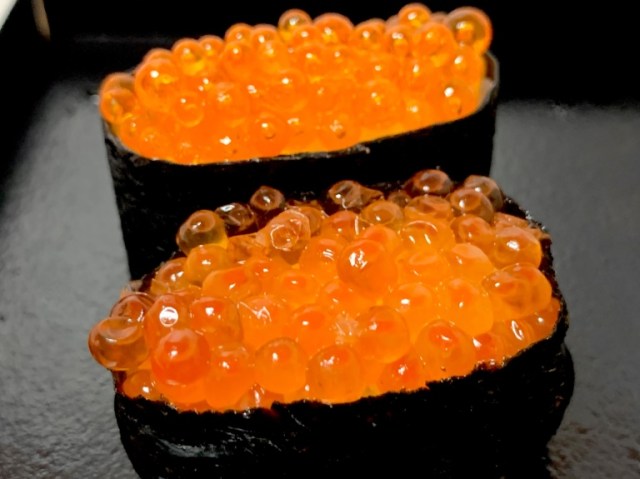
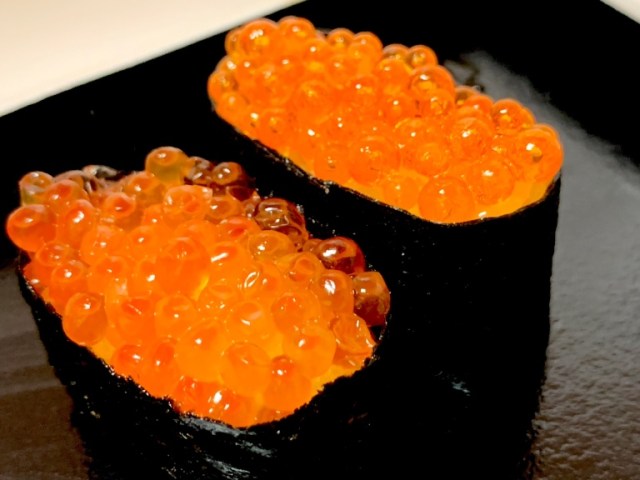
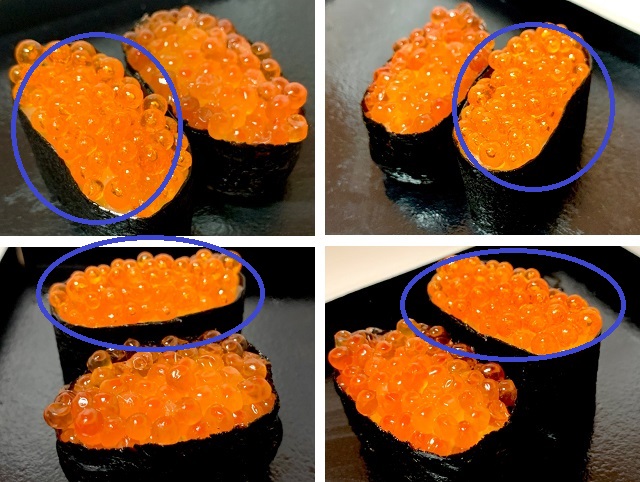
 Here’s the reason why your expensive ikura sushi often comes with some cheap cucumber slices
Here’s the reason why your expensive ikura sushi often comes with some cheap cucumber slices This crazy plastic sushi model has 366 pieces, which actually makes a lot of sense【Photos】
This crazy plastic sushi model has 366 pieces, which actually makes a lot of sense【Photos】 I can’t believe it’s not fish eggs? Taste-testing Japan’s imitation “almost ikura”【Photos】
I can’t believe it’s not fish eggs? Taste-testing Japan’s imitation “almost ikura”【Photos】 Here’s what a 10,000-yen Sushi Cake from Japan looks like
Here’s what a 10,000-yen Sushi Cake from Japan looks like Who’s got the best, cheapest one-person sushi delivery in downtown Tokyo? Mr. Sato investigates!
Who’s got the best, cheapest one-person sushi delivery in downtown Tokyo? Mr. Sato investigates! Japanese ramen restaurants under pressure from new yen banknotes
Japanese ramen restaurants under pressure from new yen banknotes Tokyo Tsukiji fish market site to be redeveloped with 50,000-seat stadium, hotel, shopping center
Tokyo Tsukiji fish market site to be redeveloped with 50,000-seat stadium, hotel, shopping center McDonald’s new Happy Meals offer up cute and practical Sanrio lifestyle goods
McDonald’s new Happy Meals offer up cute and practical Sanrio lifestyle goods French Fries Bread in Tokyo’s Shibuya becomes a hit on social media
French Fries Bread in Tokyo’s Shibuya becomes a hit on social media Mt. Koya planning to instate visitor’s tax to cope with huge tourist numbers
Mt. Koya planning to instate visitor’s tax to cope with huge tourist numbers Pokémon Sleep camping suite and guestrooms coming to Tokyo Hyatt along with giant Snorlax burgers
Pokémon Sleep camping suite and guestrooms coming to Tokyo Hyatt along with giant Snorlax burgers Beautiful Red and Blue Star luxury trains set to be Japan’s new Hokkaido travel stars
Beautiful Red and Blue Star luxury trains set to be Japan’s new Hokkaido travel stars Starbucks Japan adds a Motto Frappuccino to the menu for a limited time
Starbucks Japan adds a Motto Frappuccino to the menu for a limited time Sakura tree falls on man at Sannenzaka near Kiyomizu temple in Kyoto 【Breaking News】
Sakura tree falls on man at Sannenzaka near Kiyomizu temple in Kyoto 【Breaking News】 Cosplay in front of explosions and flames at the upcoming fiery Baku Festival
Cosplay in front of explosions and flames at the upcoming fiery Baku Festival All-you-can-drink Starbucks and amazing views part of Tokyo’s new 170 meter-high sky lounge
All-you-can-drink Starbucks and amazing views part of Tokyo’s new 170 meter-high sky lounge More foreign tourists than ever before in history visited Japan last month
More foreign tourists than ever before in history visited Japan last month Starbucks reopens at Shibuya Scramble Crossing with new look and design concept
Starbucks reopens at Shibuya Scramble Crossing with new look and design concept Studio Ghibli releases new action figures featuring Nausicaä of the Valley of the Wind characters
Studio Ghibli releases new action figures featuring Nausicaä of the Valley of the Wind characters Studio Ghibli glasses cases let anime characters keep an eye on your spectacles
Studio Ghibli glasses cases let anime characters keep an eye on your spectacles Is the new Shinkansen Train Desk ticket worth it?
Is the new Shinkansen Train Desk ticket worth it? New private rooms on Tokaido Shinkansen change the way we travel from Tokyo to Kyoto
New private rooms on Tokaido Shinkansen change the way we travel from Tokyo to Kyoto Beautiful Ghibli sealing wax kits let you create accessories and elegant letter decorations【Pics】
Beautiful Ghibli sealing wax kits let you create accessories and elegant letter decorations【Pics】 Studio Ghibli releases Kiki’s Delivery Service chocolate cake pouches in Japan
Studio Ghibli releases Kiki’s Delivery Service chocolate cake pouches in Japan New definition of “Japanese whiskey” goes into effect to prevent fakes from fooling overseas buyers
New definition of “Japanese whiskey” goes into effect to prevent fakes from fooling overseas buyers Our Japanese reporter visits Costco in the U.S., finds super American and very Japanese things
Our Japanese reporter visits Costco in the U.S., finds super American and very Japanese things Studio Ghibli unveils Mother’s Day gift set that captures the love in My Neighbour Totoro
Studio Ghibli unveils Mother’s Day gift set that captures the love in My Neighbour Totoro Domino’s Japan now sells…pizza ears?
Domino’s Japan now sells…pizza ears? New Japanese KitKat flavour stars Sanrio characters, including Hello Kitty
New Japanese KitKat flavour stars Sanrio characters, including Hello Kitty New Pokémon cakes let you eat your way through Pikachu and all the Eevee evolutions
New Pokémon cakes let you eat your way through Pikachu and all the Eevee evolutions Sales of Japan’s most convenient train ticket/shopping payment cards suspended indefinitely
Sales of Japan’s most convenient train ticket/shopping payment cards suspended indefinitely Sold-out Studio Ghibli desktop humidifiers are back so Totoro can help you through the dry season
Sold-out Studio Ghibli desktop humidifiers are back so Totoro can help you through the dry season Japanese government to make first change to romanization spelling rules since the 1950s
Japanese government to make first change to romanization spelling rules since the 1950s Ghibli founders Toshio Suzuki and Hayao Miyazaki contribute to Japanese whisky Totoro label design
Ghibli founders Toshio Suzuki and Hayao Miyazaki contribute to Japanese whisky Totoro label design Doraemon found buried at sea as scene from 1993 anime becomes real life【Photos】
Doraemon found buried at sea as scene from 1993 anime becomes real life【Photos】 Tokyo’s most famous Starbucks is closed
Tokyo’s most famous Starbucks is closed One Piece characters’ nationalities revealed, but fans have mixed opinions
One Piece characters’ nationalities revealed, but fans have mixed opinions We asked a Uniqlo employee what four things we should buy and their suggestions didn’t disappoint
We asked a Uniqlo employee what four things we should buy and their suggestions didn’t disappoint Princesses, fruits, and blacksmiths: Study reveals the 30 most unusual family names in Japan
Princesses, fruits, and blacksmiths: Study reveals the 30 most unusual family names in Japan These beautiful pieces of sushi aren’t actually sushi
These beautiful pieces of sushi aren’t actually sushi Insanely detailed 900-plus-piece Japanese model kit is…a 1:1-scale sesame dumpling【Photos】
Insanely detailed 900-plus-piece Japanese model kit is…a 1:1-scale sesame dumpling【Photos】 Japan super budget dining – What’s the best way to spend 1,000 yen at sushi restaurant Sushiro?
Japan super budget dining – What’s the best way to spend 1,000 yen at sushi restaurant Sushiro? Japanese convenience store showdown – Who’s got the best ikura rice balls?【Taste test】
Japanese convenience store showdown – Who’s got the best ikura rice balls?【Taste test】 New sushi train toy makes sushi for you, then delivers it, and is exactly what we want【Video】
New sushi train toy makes sushi for you, then delivers it, and is exactly what we want【Video】 We ate a pickled tapioca bubble rice bowl and it was un-bowl-lievable
We ate a pickled tapioca bubble rice bowl and it was un-bowl-lievable Clever home sushi-making set puts a whole new spin on revolving sushi
Clever home sushi-making set puts a whole new spin on revolving sushi Less than half of Japanese people OK with bare hand-pressed rice balls, survey says, but why?
Less than half of Japanese people OK with bare hand-pressed rice balls, survey says, but why? Tokyo has a BLUE sushi restaurant with all-you-can-eat BLUE sushi for just 400 yen (US$3.50)
Tokyo has a BLUE sushi restaurant with all-you-can-eat BLUE sushi for just 400 yen (US$3.50) What’s for dinner? A US$113/3.3-pound sushi bowl from one of Japan’s favorite cheap restaurants
What’s for dinner? A US$113/3.3-pound sushi bowl from one of Japan’s favorite cheap restaurants Which Japanese conveyor belt sushi chain has the best salmon sushi?【Taste test】
Which Japanese conveyor belt sushi chain has the best salmon sushi?【Taste test】 Salmon katsudon? Tokyo restaurant’s specialty is like a deep-fried sashimi lunch【Photos】
Salmon katsudon? Tokyo restaurant’s specialty is like a deep-fried sashimi lunch【Photos】 Your guide to eating healthy sushi – because in most forms, it’s not that healthy!
Your guide to eating healthy sushi – because in most forms, it’s not that healthy! How to have a great meal at conveyer belt sushi chain Kura Sushi even if you hate raw fish
How to have a great meal at conveyer belt sushi chain Kura Sushi even if you hate raw fish Sukiyabashi Jiro Sushi Rice: How good is rice from Japan’s legendary sushi restaurant?
Sukiyabashi Jiro Sushi Rice: How good is rice from Japan’s legendary sushi restaurant?
Leave a Reply